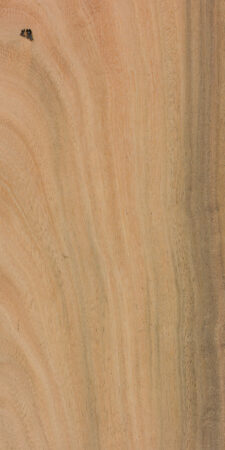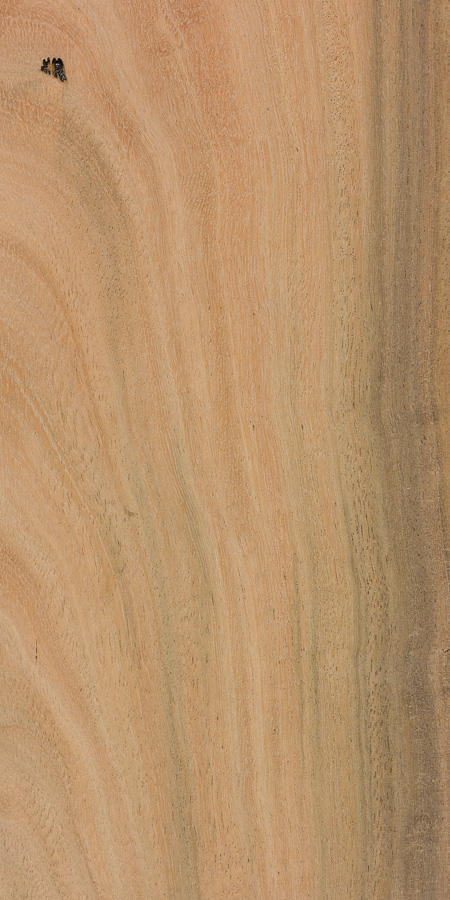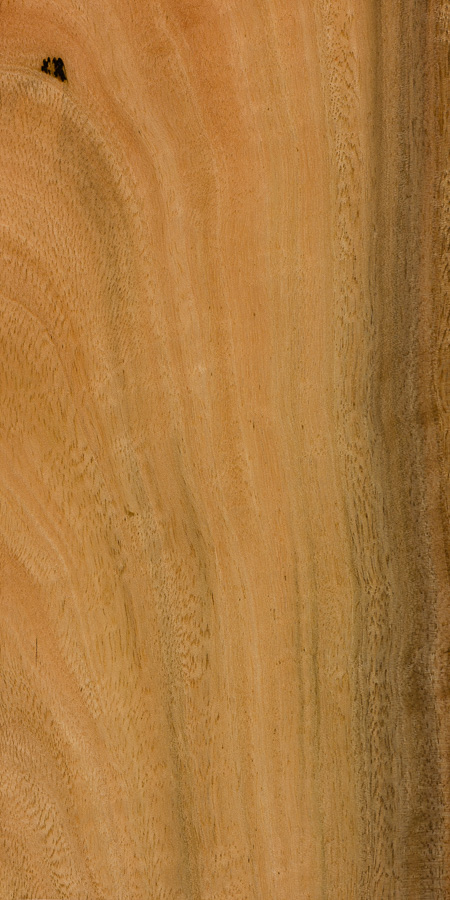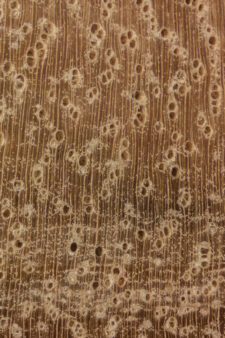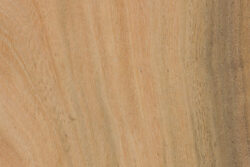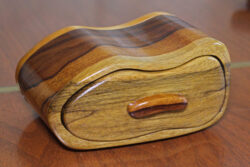Common Name(s): Broad-leaved apple
Scientific Name: Angophora subvelutina
Distribution: Eastern Australia
Tree Size: 56-82 ft (17-25 m) tall,
1-2 ft (.3-.6 m) trunk diameter
Average Dried Weight: 46.8 lbs/ft3 (750 kg/m3)
Specific Gravity (Basic, 12% MC): .58, .75
Janka Hardness: 1,330 lbf (5,930 N)*
*Estimated hardness based on specific gravity
Modulus of Rupture: 11,310 lbf/in2 (78.0 MPa)
Elastic Modulus: 1,813,000 lbf/in2 (12.50 GPa)
Crushing Strength: 6,820 lbf/in2 (47.0 MPa)*
*Strength properties are estimated based on AS/NZS 2878:2000, strength group SD5
Shrinkage: Radial: 6.1%, Tangential: 9.6%,
Volumetric: 16.0%, T/R Ratio: 1.6
Color/Appearance: Heartwood is a light reddish brown. Contrasting sapwood is pale yellow. Gum veins are common, and can appear as defects in the facegrain of the wood. Quartersawn pieces with interlocking grain display a ribbon-stripe figure somewhat reminiscent of satinwood.
Grain/Texture: Grain is straight to interlocked. With a coarse texture and good natural luster.
Rot Resistance: Rated as moderately durable to non-durable; poor insect resistance.
Workability: Tends to be somewhat difficult to work on account of its frequent grain defects. Glues and finishes well.
Odor: No characteristic odor.
Allergies/Toxicity: Besides the standard health risks associated with any type of wood dust, no further health reactions have been associated with broad-leaved apple—possibly due to its relative obscurity. Many species in the closely related Eucalyptus genus can cause skin irritation, as well as a number of other health reactions. See the articles Wood Allergies and Toxicity and Wood Dust Safety for more information.
Pricing/Availability: Not harvested or available commercially for structural lumber. Limited quantities can be found regionally—usually as firewood or fencing material. Expect prices to be moderate.
Sustainability: This wood species is not listed in the CITES Appendices, and is reported by the IUCN as being a species of least concern.
Common Uses: Fences, firewood, and small, specialty wood items.
Comments: None.
Images: Drag the slider up/down to toggle between raw and finished wood. Note the small gum inclusion in the upper left corner of the sample—a common defect in this genus.
There are currently no pictures of this exact wood species, but a similar species within the Angophora genus is being substituted (A. floribunda). If you’d like to contribute a wood sample for this webpage, please see the contact form for donating wood samples.
Identification: See the article on Hardwood Anatomy for definitions of endgrain features.
Porosity: diffuse porous
Arrangement: solitary and radial multiples, sometimes arranged in a radial/diagonal pattern
Vessels: large, few; dark brown colored deposits occasionally present
Parenchyma: vasicentric, lozenge, confluent, and banded (marginal)
Rays: medium to wide; normal spacing
Lookalikes/Substitutes: Angophora species can sometimes be confused with Eucalyptus—the two genera are actually botanically very closely related. However, in contrast to Eucalyptus (which has pores that are exclusively solitary), pores in Angophora very frequently occur in radial multiples of two to five.
Notes: Angophora species have intermittent gum inclusions—a conspicuous defect on the face grain—which can help to distinguish it from other similar species.
Related Content:

